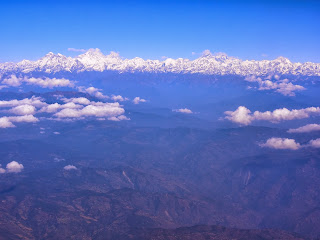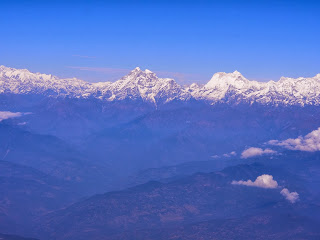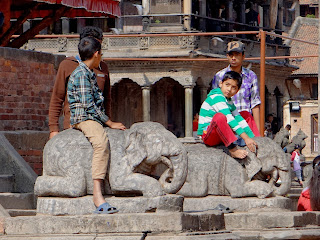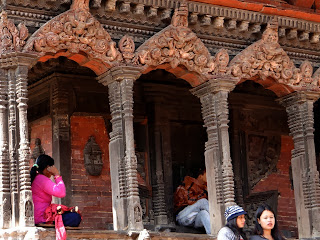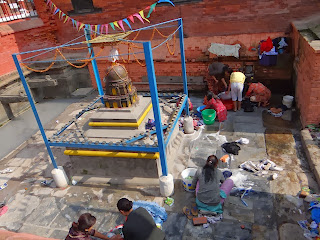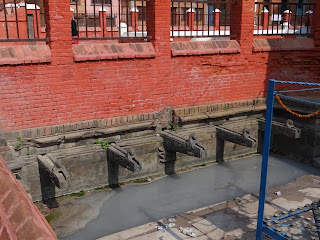On the second last day of our trip on our return to Kathmandu from Nagatok, we met up with the guide who had taken us on a tour of Swayambunath Stupa and the Kathmandu Durbar Square when we arrived in Nepal.
This time he would take us for a half-day tour of the Boudanath Stupa and Patan City. We found that he was not very informative or clear in his guiding and was not thorough in the coverage of the important sites visited. We did not learn much from him but even though we could not fully appreciate the historical aspects of our visits to these two places, we were awed by the architecture of Patan City that went as far back at the 16th Century although the history of Patan reached a few centuries back in time to 570AD.
Patan City is the oldest city in the Kathmandu Valley and is a Palace Complex with many temples and shrines that connected the king and the people to the Hindu Gods and Goddesses who blessed and protected them. It is a UNESCO Heritage site (1979) with remarkable and beautiful works of art in the form of the monuments and architectural designs of the buildings as well as the wood and stone carvings depicting images of the Hindu religion.
The place is crowded with tourists and street vendors but thankfully, unlike the Kathmandu Durban Square, no vehicles were allowed into the Square. The tourists were busy taking photos trying to capture the best angle, the best lighting and the best picture. I was one of them. However, I believe that we will never be able to capture the splendour of a place that once housed Kings and royalty and where the buildings, shrines and temples were revered and not intruded upon by vendors and people needing shade and a place to rest.Times have changed.
Walking towards Patan Durbar Square.
The first ancient monument that greeted us in Patan Durbar Square.
A scene taken countless times by tourists.
Beauty in wood and stone from another age.
Typical architecture of Durbar Squares in Kathmandu.
An ancient script that ordinary folks cannot make sense of.
Writing from a different century that could be incomprehensible centuries later if it does survive destruction.
I should have asked why these men playing Chess had to do so in a cage.
Did such washing take place centuries ago?
The guide told us that you pray for your wishes to be fulfilled in this temple.
If your wish came true, you would hang a bell here.
The mirror is for you to dot the teeka on your forehead properly.
The last place of interest - A Tibetan Buddhist temple.
People were waiting around in the temple for a priest to pass through this doorway. We were not allowed to take photos of him and the people with him.
Retracing our steps - leaving Patan Durbar Square.
Last shot that is similar to the first.









